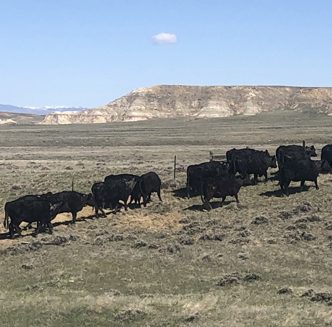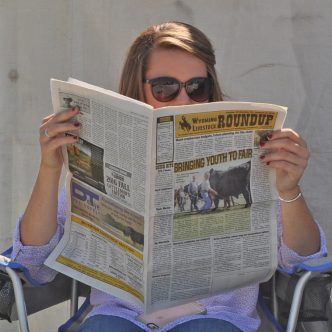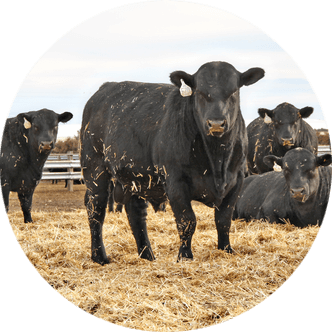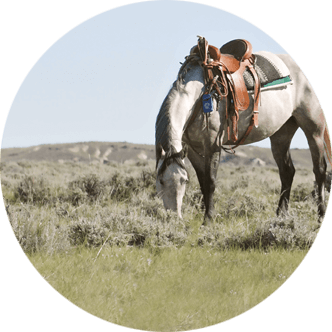The art of rawhide: Acclaimed Braider and Western Artist Vince Donley boasts years of rawhide braiding experience
At just 12 years old, Vince Donley starting teaching himself how to braid rawhide with the help of a book by Author and Braider Bruce Grant, who wrote several books on leather and rawhide braiding including “Leather Braiding” and “Encyclopedia of Rawhide and Leather Braiding,” which include detailed illustrations and step-by-step instructions.
“I struggled a bit with it, and it wasn’t until I was in my 20s when I finally figured out the right moisture content in order to braid,” Vince shares. “At the time, I was interested in learning, but I didn’t have any mentors. Nearly everything I tried came out of my Bruce Grant book.”
“Then, in the 1980s, I ran into more guys who were doing some braiding, and they were all trying to figure it out too. Before then, there wasn’t a lot of sharing of information between artists,” he admits.
Vince notes he originally thought braiding would be a simple hobby. However, nearly 50 years later, the talented artist is still making and selling his impressive rawhide work.
The journey
“I have been braiding for more than 50 years, and in the 1980s I sold my first pieces,” Vince shares. “I hung my work in John and Kitty Butler’s saddle shop, Custom Cowboy Gear, in Sheridan, and they sold it for me on commission. Even after I retired from braiding for various saddle shops, I still had them. I never needed a big customer base.”
Vince notes in the beginning there were only a few rawhide braiders, and most of the braid work found in Wyoming was made by Jack Shepard, who passed in 2007.
“I had him to look up to when I was getting started,” Vince says. “Many of the little shops around the area would get some of his work to sell, and I was amazed at how consistent it was.”
After Jack semi-retired, there was a gap left in the market that needed to be filled, so Vince began selling more work to several different saddle shops across the state. He did this until he was about 65 years old. Then, seven years ago, he and his wife decided to travel and sell some of his braid work themselves.
“I didn’t get to slow down. I didn’t really retire,” he laughs. “My wife and I spent about 45 years in the Sheridan area, then moved to Sundance a couple of years ago. We are presently trying to build our retirement home.”
Creating the art
Although Vince has created all different types of horse tack, he has seen the most demand for his bosals.
“It’s my favorite thing to make,” he shares. “But we also do a lot of braided reins and romels now. In the last 20 to 30 years, there has been quite an upsurge in the vaquero tradition of horsemanship. This started when Ray Hunt was going around doing clinics, and it’s been furthered by some of his students, especially Buck Brannaman.”
Vince became acquainted with Buck while living in Sheridan, and he attributes a lot of his growth as a braider to Buck and his wife Mary.
Vince admits times have certainly changed since he started and information is more readily available on the internet now. However, when it comes to experience, he has now been perfecting the craft far longer than most.
“I got started when the resurgence of the old, traditional ways was barely getting started,” he says. “After World War II, a lot of leather craft almost died out, then in the 1970s, some of the traditional art began a resurgence.”
Vince attributes this to the work of Kurt Markus and other famous photographers who published books depicting the rugged and romantic spirt of the cowboy and the American West, which begin stirring up interest.
Now, some braid work is considered art instead of tack, and people would rather hang it on their wall than use it for everyday riding.
“There used to be quite a bit an art focus, but it has somewhat died out because there just aren’t as many collectors today,” Vince admits.
He notes the art focus of braid work was big in the 1990s when there were a lot of leather shows and competitions for gear makers, which changed the dynamic from functionality to craft and required braiders to think outside of the box and try different things.
“There are so many little things I learned throughout the years. Some of the younger guys have also come up with tricks that I’ve picked up on,” Vince shares. “I’ve found a person needs to keep trying different things, otherwise they get stagnated and set in their ways. Trying new things keeps me sharp.”
Today, Vince says he usually buys cowhides from local butchers and packing plants to make all of his own rawhide.
“Making your own is just another means of quality control,” he states. “And preparing the rawhide properly is an art in itself.”
While there are numerous different ways to do it, Vince says he likes to use a hot water slip, and for many years, he used wringer washers to do this, but they are now becoming hard to find.
“I think I’ve worn out two Maytag washers, and I have an old Zenith that doesn’t seem to want to quit,” he says. “Then I bought a cement mixer to use for some of this. I would usually have two or three washing machines going when I was doing hides. I found this makes it a much shorter process to slip the hair with water than any other way. I could get a hide and have it slipped and cleaned within a couple of hours.”
Vince also uses dye on some of the hides he works with.
“When I started out, nobody wanted Black Angus hides because they wanted everything to look like Luis Ortega’s work, which was kind of white and yellow. There was nothing wrong with black hides, except a lot of them turn gray, green or mottled, which wasn’t accepted until years ago,” Vince explains. “So, I started dyeing some rawhide because there were so many black hides coming through.”
When Vince first started making rawhide, it wasn’t hard to get red hides, but today a person would probably get four black hides to one red one.
“Last year, I did about 15 hides and only had two red ones I could use for finished hides,” he says. “The rest of it I dyed.”
Vince adds, “A lot of people have their own program. Some use natural dyes. I recently watched a video of a guy who had a hide in the frame, letting it start to dry and he just took a sponge and some leather dye and wiped it on. Several people tell me this seems to work pretty well, but I just use Rit dye you can buy at the grocery store.”
“It takes a bit of trial and error to get a program going that works, to be able to dye the hide and have it be consistent,” he continues. “There are some colors that just don’t work out, so I tend to stay with earth-type tones.”
Sharing the talent
Vince admits he expected things to start slowing down with the passage of time, but his work is still in high demand.
“I’ve been very fortunate. I have a lot of repeat customers who have been good to us,” he says.
For those interested in creating their own braid work, Vince mentions the importance of patience and resilience.
“It can be very frustrating starting out, but now there is so much to learn on the internet,” he says. “Some people just give up on rawhide, but they need to keep trying. It took me years to learn the proper moisture content to make it workable, but once you get a feel for it, it’s a lot easier.”
He continues, “Many people would rather braid leather because they can put it down and pick it up again later and nothing ever changes, but you can’t do that with rawhide. When it’s ready to work, you have to work it. There is a short window of opportunity.”
For more information on Donley Rawhide, visit @DonleyRawhide on Facebook.
Heather Smith Thomas is a corresponding writer for the Wyoming Livestock Roundup. Send comments on this article to roundup@wylr.net.





